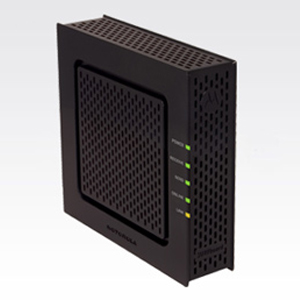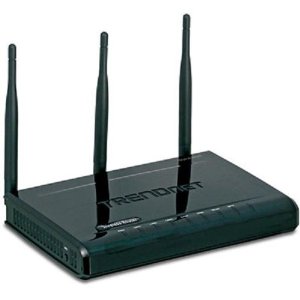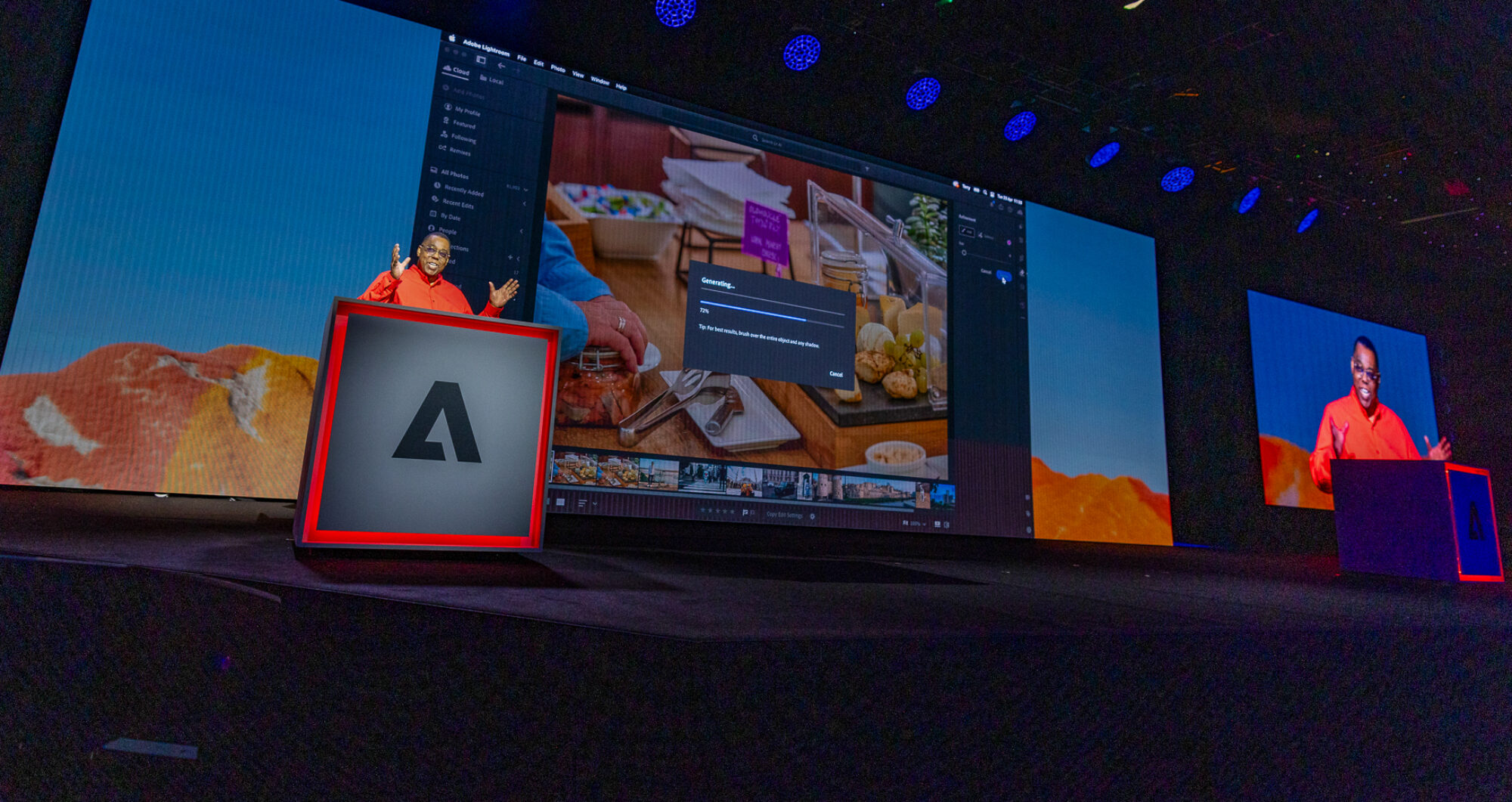
If you're a cable modem user chances are your cable modem is on 24/7 doing its job and you don't give it a second thought. Most people go for years without upgrading their equipment because as long as it's working the cable company has no reason to upgrade you and as long as it's working you have no reason to think about upgrading right? Think again! Like any other technology out there, cable modem manufacturers add new features too. So while your old cable modem is functioning, you may not be getting all of the speed out of your connection that you could be getting. Here in Michigan my cable provider is Comcast and while I've had my issues with them for Cable Television off and on, my Cable Modem service has worked very well for over 10 years. As a matter of fact my internet speeds have steadily increased over the years. So I've been a happy customer.
And then something went wrong…
Very rarely does my IP address change and usually when it does it means that Comcast has changed something on their end. Normally their changes have meant good things for me. Not this time! I was out of town and wanted to connect to my home network and I couldn't (at least with the IP address that I knew) because my IP address had changed. It wasn't a big deal and I moved on. However, once I got home I immediately noticed that my upload speeds were in the toilet. Here's a speed test I performed back on July 7, 2008 (yes almost 2 years ago) when I noticed and blogged about how much faster my service had gotten:
![]()
Great download and upload speeds back then.
Here's the speed I was getting when I got home from my trip:

While my download speed was still rocking as fast as ever, my upload speed was way way down. Below 1Mbps. This all happened around the time when I was needing to upload lots of video content via FTP for the CS5 launch and therefore a slow upload speed was very painful.
It's not our fault
I immediately got on the phone with Comcast support (after doing the standard unplugs and resets). They claimed that nothing had changed on their end. Of course! We tried a bunch of things and best I could get was about 1.75Mbps when connecting my computer directly to the modem and a little less than than on the router. I know that routers add some latency, but this was more than just a latency problem and again it wasn't all that much faster connected directly to the cable modem. Comcast told me that they only promise 2Mbps UP on my plan and since I was getting very close to that, there wasn't much they could do.
It's my own modem
I own my own cable modem because it seems that since they don't change very often the math works out in my favor to own rather than rent. Since I own my own equipment that means that I can upgrade to the latest standards whenever I want. If I ask Comcast to bring me out a new cable modem, they will but I'll have no control over what they bring. I know that Comcast is going to be upgrading to faster speeds and you'll need a cable modem capable of handling DOCIS 3 to get those faster speeds. I also know that this kind of upgrading of their systems doesn't happen over night and I figured that they had already started putting some of this new gear in place. So why not take advantage of it?
I ordered a New Modem AND a New Router
I ordred a NEW Motorola SB6120 DOCIS 3 Cable Modem and a NEW TRENDnet 300Mbps Router. Although I probably didn't "need" a new router, I wanted the latest technology and my old D-Link had long since been discontinued and was not going to receive any more firmware updates. I also wanted to go Gigabit Ethernet across the board. The Motorola Cable Modem has a Gigabit Ethernet port on it and therefore I didn't want the router to be the bottleneck. Most routers out there only have 10/100 WAN ports even if they do have a Gigabit LAN switch. Aside from Apple AirPort Extreme products, (which I can't use for DHCP because they don't let you customize the numeric range), TRENDnet was the only one that I found to have a Gigabit WAN port. Although I don't need it at all for its wireless capabilities (I already have an extensive AirPort network setup), I love everything else that it offers.

The Tests are In and the Results are Shockingly Good!
I wanted to perform a series of speed tests to see what was what. I was blown away by the results! My testing was all done using the same testing site (speakeasy.net/speedtests) and testing against the same server (Chicago) using the same computer and ethernet cable. I had WiFi turned off for all these tests and no other network traffic was going on at the time. Here goes:
Test 1: Old Modem and Old Router:

Test 2: Old Modem directly connected (no router):

Test 3: New Modem directly connected (no router):

Test 4: New Modem, OLD router:

Test 5: New Modem, New Router:

The Bottom Line
Whoa! My upload speeds are now better than they ever were before. While I probably could have gotten by with just the new Motorola Modem, the New TRENDnet Router does boost the speeds a little more and again having gigabit ethernet all the way through just makes me feel better. It has a nice on/off switch for the wireless features and I just switched them off to effectively make it a wired Gigabit router only. Setup was painless on both devices and even the call to Comcast was easy. I'm happy!
The Motorola SB6120 DOCIS 3 Cable Modem is here for about $86.
The TRENDnet 300Mbps Wireless N Gigabit Router TEW-639GR is here for about $73.


Very interesting – makes sense to check these components for upgrades periodically too. I am also with Comcast, and requested a firmware upgrade on their modem which they pushed out. Speeds increased considerably after that.
I am wondering about the router though – I know you said it may not have been necessary, but am thinking about what the impact would be if you were using a router that you flashed with an open sourced BIOS that gave you more control over ports and configuration than the vendor firmware (dd-wrt)?
Terry
with that router are you able to also use an airport express?
Love your blog. Read it every day.
Gary
Yes, Gary I have various AirPort Express and Extreme units plugged in around the house and they are all set to Bridge Mode via Ethernet. If your question was around using an AirPort Express to connect to it wirelessly, it does support WDS and of course you could just use the AirPort Express to join the network wirelessly.
I’m on Fios with their supplied wireless router and getting 21.81 and 8.31 respectively – not bad!
Just took 3 readings and got an average of 24.80 and 7.75 as an average –
Hi Terry,
Great review Terry. I have Apple Airport Express, I am running 24″ iMac, 17″ MacBook Pro due to arrive any day, Playstation3, and 2 iPhones. Do you think I would see improvements? in speed if I switched to this Trednet Router or shall I get the AirPort Extreme Base Station, which I think is overpriced compared to Trednet. What is the difference between them?
Rafal
Rafal,
Thanks! My only reason for having AirPort Express units in my house is to use the built-in AirTunes support for streaming music to different rooms. If it wasn’t for that I wouldn’t have them. So if you don’t need AirTunes, i would probably go with a less expensive option at this point.
thanks Terry
Hi Terry,
I would appreciate if you could advice for my below issue..
I heard and experienced that D-Link wireless routers doesnt go well with Apple products, is that right? I have a iPOD touch and Iphone + (2 laptops – Compac and IBM and Dell desktop) connected to D-Link wireless router (it is not DIR 655 ). Everyday i am having issues connecting to my WiFi from iphone and compac laptop. If i restart the router , it connects but often drops the connection. The D-Link customer service said issue is with iPhone , not with D-Link.
Any suggestion/advice? OR is it better to switch to TrendNet.
thanks for your time,
-Ramkumar
I would swap it out for the TRENDnet or a Netgear.
I will try TredNet and let you know the performance. Thanks Much!
Terry,
I am confused on what the benefit of getting a router besides an airport extreme. You mention that you cannot use apple’s DHCP because they don’t let you customize the numeric range. I am not sure what you mean by this or what situation you would need to customize the numeric range. Could you expand on this?
Btw…Your blog is the FIRST one that I read every day and really enjoy it!!!
Kevin
Thanks Kevin , I have a very specific need to have an internal IP range to be compatible with my work VPN system AND to see all of my local network nodes while on VPN. Apple only let’s you choose between 192.168, 10.0 and 172.x. You can’t set your own custom range like you can on every other router out there. So if you don’t have this need then you’re fine with an AirPort BS.
Terry, You should point out that the three ranges that the Airport Extreme allows you to choose from are the standard ranges that should be used for private networks and would be acceptable for 99.99% of people. The only reason you need something different is because your VPN software blocks access to local IPs that aren’t in the same range as the IP you’re assigned when you connect to your VPN. This is a pretty restrictive and unique scenario that is specifically configured by your VPN administrator and in no way would affect the use of the Airport Extreme by the typical consumer.
You’re absolutely right. I “need” this, most people won’t. I thought I was pretty clear in stating that “I need” to customize the range. Perhaps not.
Thanks for taking the time to clarify that!!
Terry,
I don’t understand the comment about the Airport Extreme:
“which I can’t use for DHCP because they don’t let you customize the numeric range”
I can customize the numeric range of the DHCP without a problem under the Internet tab and the DHCP. I guess if you need more than a class B 10.0.x.x addresses. If you have a conflict with the 10 network (as some VPNs do), you can also us 192.169.x and 172.16.x. You can assign the beginning address, ending address, and you can also set reservations for common machines that are on your network. I don’t understand what other feature you are looking for?
Tim,
I need something besides 10.0, 192.168 and 172.16 that is specific to my VPN corporate environment. For example say I needed 192.155.x.x. Any other router lets me do that. AirPorts don’t.
Terry,
Your blog entry today was right on time. Over the past week or so my cable modem (sb5101) has been periodically rebooting itself and I’ve been desperately trying to figure out why. I tried all the usual checks (cable problems, modem reset and dlink dir-615 wireless router, called comcast and had them try to send reset signals) and nothing has helped very much.
The only thing I’ve been able to pin down is the fact that whenever I try to stream netflix from either my wii, roku hd, or insignia bluray player the modem crashes soon after. Since I haven’t been streaming the last couple of days the modem has been more stable. Prior to last week I haven’t been having issues with connectivity.
I was thinking that maybe there was more traffic on my network than the modem could handle. Do you know if comcast imposes any kind of limit on the number of devices or amount of traffic coming from home networks? I’ve got 1 laptop, 2 desktops, 3 streaming devices (mentioned above), an iphone and 2 blackberries that run off my network. At peak usage I may have 1 streaming device going, 1 laptop (web surfing) , 1 desktop (web surfing) and maybe 1 mobile device using bandwidth. Is it too much for my sb5101?
On another note, I echo the sentiments of what others have written about your blog. I read it every day and I find it to be an invaluable tech resource. I especially liked the post about Seal. Please keep doing what you do because your work is appreciated by tons of people.
Audrey,
Thanks!
I do know that Comcast has in the past throttled customers back if they were using “too much” bandwidth. Supposedly you can now check your “meter” by logging into your account. I haven’t done this yet, as the first time I tried it wasn’t working. Perhaps that’s a blog post waiting to happen? 🙂
That certainly could be a new blog post. I’m gonna check the comcast site to see if the usage meter is working. In the meantime, your post has given me a great excuse to buy a new modem.
Normally if Comcast is throttling your service your modem shouldn’t reboot, you would just see or “feel” a slowdown in your service. The rebooting problem could be that the modem is going bad. Pick up another modem and try it out, you can always return the modem if that isn’t the problem. Make sure to call Comcast when you get the new modem hooked up as they will need some info from it in order for it to work.
Thanks for the input Dave. I decided to try a new modem. I got the sb6120 this afternoon. I am happy to report that my internet connection has been very stable all afternoon. I streamed a complete movie from Netflix and didn’t have any outages.
While I’m thrilled that my internet connection is stable, I’m really bummed that I didn’t get a bump in speed….at all. Last night I did a speed test w/ my old modem and got 20.98 down & 2.96 up. After I hooked up my new modem (direct) it topped out at 21 down & 3.03 up.
I’m in the Ypsi/Ann Arbor area, so I’m wondering if speeds out this way are just slower. Or perhaps it could be just a poor cabling job for my condo complex. I do recall one of the many comcast techs who have been here saying there were quite a few splitters in the box outside.
Thanks Terry, just bought your recommended modem, and it will pay for itself in a little over a year!
Been needing to pick up a cable modem for a couple months, you made it an easy choice… Thanks!
I have been holding off on the purchase of a new router since reading this last May. Finally did so–and timewarner cable doesn’t support it yet. Bummer.
Terry…
Are you still happy wIth your Motorola SB6120 DOCIS 3 Cable Modem?
Marty
Yes Marty. Love it.
THANKS FOR THE INFO !!!!! Just ordered the router, don’t need the cable/modem as mine is working fine with good speed, but when the time comes.